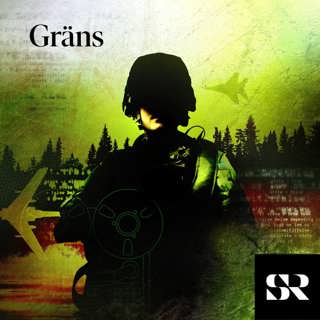
A Messy Return to School in New York
Iolani Grullon teaches dual-language kindergarten in Washington Heights in New York City, where she has worked for the last 15 years.She, like many colleagues, is leery about a return to in-person instruction amid reports of positive coronavirus cases in other schools. “I go through waves of anxiety and to being hopeful that it works out to just being worried,” she told our editor Lisa Chow.On top of mixed messaging from the city about the form teaching could take, her anxiety is compounded by a concern that she might bring the coronavirus home to her daughter, whose immune system is weaker as a result of an organ transplant.Today, we look at how one teacher’s concerns in the lead up to the first day back illustrates issues around New York City’s reopening of public schools. Guest: Lisa Chow, an audio editor for The New York Times, speaks to a kindergarten teacher in New York City. For more information on today’s episode, visit nytimes.com/thedaily Background reading: New York City was scheduled to reopen public schools on Monday. Mayor Bill de Blasio this week delayed the start of in-person instruction.Nearly 40 percent of parents have opted to have their children learn fully remotely through at least the first few months of the school year. That number reflects the deep divide among the city’s families about how to approach in-person learning. Subscribe today at nytimes.com/podcasts or on Apple Podcasts and Spotify. You can also subscribe via your favorite podcast app here https://www.nytimes.com/activate-access/audio?source=podcatcher. For more podcasts and narrated articles, download The New York Times app at nytimes.com/app.
18 Sep 202031min

The Forgotten Refugee Crisis in Europe
Among the olive groves of Moria, on the Greek island of Lesbos, a makeshift city of tents and containers housed thousands of asylum seekers who had fled conflict and hardship in Africa, the Middle East and elsewhere.Already frustrated at the deplorable conditions, inhabitants’ anger was compounded by coronavirus lockdown restrictions. The situation reached a breaking point this month when fires were set, probably by a small group of irate asylum seekers, according to the authorities. The flames decimated the camp and stranded nearly 12,000 of its residents in the wild among tombstones in a nearby cemetery and on rural and coastal roads.We chart the European refugee crisis and the events that led up to the blaze at Moria.Guest: Matina Stevis-Gridneff, who covers the European Union for The New York Times.For more information on today’s episode, visit nytimes.com/thedaily Background reading: The fires at the Moria camp have intensified what was already a humanitarian disaster. Originally built to hold 3,000 newly arrived people, it held more than 20,000 refugees six months agoThe camp’s inhabitants had for years resented the squalid conditions and the endless delays in resolving their fates. Those frustrations collided with the restrictions imposed to combat the coronavirus, and the combination has proved explosive. Subscribe today at nytimes.com/podcasts or on Apple Podcasts and Spotify. You can also subscribe via your favorite podcast app here https://www.nytimes.com/activate-access/audio?source=podcatcher. For more podcasts and narrated articles, download The New York Times app at nytimes.com/app.
17 Sep 202028min

Quarantine on a College Campus
This episode contains strong language.Infected with the coronavirus and separated from their peers in special dorms, some college students have taken to sharing their quarantine experiences on TikTok.In some videos posted to the social media app, food is a source of discontent; one student filmed a disappointing breakfast — warm grape juice, an unripe orange, a “mystery” vegan muffin and an oat bar. Others broach more profound issues like missed deliveries of food and supplie.It was within this TikTok community that Natasha Singer, our business technology reporter, found 19-year-old Zoie Terry, a sophomore at the University of Alabama, who was one of the first students to be sequestered at her college’s isolation facility.Today, we speak to Ms. Terry about her experience and explore what it tells us about the reopening of colleges. Guest: Natasha Singer, a technology reporter for The New York Times, spoke with Zoie Terry, a sophomore at the University of Alabama. For more information on today’s episode, visit nytimes.com/thedaily Background reading: Across America, colleges that have reopened for in-person teaching are struggling to contain the spread of the coronavirus. To this end, the institutions are using one of the oldest infection control measures: quarantine.While universities in other states were closing their doors, the University of Alabama opened up to students, banking on its testing and technology program to prevent an outbreak. Subscribe today at nytimes.com/podcasts or on Apple Podcasts and Spotify. You can also subscribe via your favorite podcast app here https://www.nytimes.com/activate-access/audio?source=podcatcher. For more podcasts and narrated articles, download The New York Times app at nytimes.com/app.
16 Sep 202031min

A Deadly Tinderbox
“The entire state is burning.” That was the refrain Jack Healy, our national correspondent, kept hearing when he arrived in the fire zone in Oregon.The scale of the wildfires is dizzying — millions of acres have burned, 30 different blazes are raging and thousands of people have been displaced.Dry conditions, exacerbated by climate change and combined with a windstorm, created the deadly tinderbox.The disaster has proved a fertile ground for misinformation: Widely discredited rumors spread on social media claiming that antifa activists were setting fires and looting.Today, we hear from people living in the fire’s path who told Jack about the toll the flames had exacted.Guest: Jack Healy, a national correspondent for The New York Times. For more information on today’s episode, visit nytimes.com/thedaily Background reading:“The long-term recovery is going to last years,” an emergency management director said as the fires left a humanitarian disaster in their wake.The fearmongering and false rumors that accompanied a tumultuous summer of protests in Oregon have become a volatile complication in the disaster. Subscribe today at nytimes.com/podcasts or on Apple Podcasts and Spotify. You can also subscribe via your favorite podcast app here https://www.nytimes.com/activate-access/audio?source=podcatcher. For more podcasts and narrated articles, download The New York Times app at nytimes.com/app.
15 Sep 202027min

Inside Trump’s Immigration Crackdown
This episode contains strong language.After Donald Trump was elected president, two filmmakers were granted rare access to the operations of Immigration and Customs Enforcement. Since Mr. Trump had campaigned on a hard-line immigration agenda, the leaders of the usually secretive agency jumped at a chance to have their story told from the inside. Today, we speak to the filmmakers about what they saw during nearly three years at ICE and how the Trump administration reacted to a cut of the film. Guests: Christina Clusiau and Shaul Schwarz, the filmmakers behind the six-hour documentary series “Immigration Nation.”For more information on today’s episode, visit nytimes.com/thedaily Background reading: The Trump administration has threatened the two filmmakers with legal action and fought to delay the release of “Immigration Nation” until after the election. Subscribe today at nytimes.com/podcasts or on Apple Podcasts and Spotify. You can also subscribe via your favorite podcast app here https://www.nytimes.com/activate-access/audio?source=podcatcher. For more podcasts and narrated articles, download The New York Times app at nytimes.com/app.
14 Sep 202025min

The Sunday Read: 'The Children in the Shadows'
Prince is 9 years old, ebullient and bright; he has spent much of the pandemic navigating the Google Classroom app from his mother’s phone.The uncertainty and isolation of the coronavirus lockdown is not new to him — he is one of New York City’s more than 100,000 homeless schoolchildren, the largest demographic within the homeless population.Families like Prince’s are largely invisible.Samantha M. Shapiro, a contributing writer for The New York Times Magazine, has spent the last two years speaking with over a dozen homeless families with children of school age. On this week’s The Sunday Read, she explores what their lives are like.This story was written by Samantha M. Shapiro and recorded by Audm. To hear more audio stories from publishers like The New York Times, download Audm for iPhone or Android. Subscribe today at nytimes.com/podcasts or on Apple Podcasts and Spotify. You can also subscribe via your favorite podcast app here https://www.nytimes.com/activate-access/audio?source=podcatcher. For more podcasts and narrated articles, download The New York Times app at nytimes.com/app.
13 Sep 20201h 30min

A Self-Perpetuating Cycle of Wildfires
When many in California talk about this year’s wildfires, they describe the color — the apocalyptic, ominous, red-orange glow in the sky.The state’s current wildfires have seen two and a half million acres already burned.Climate change has made conditions ripe for fires: Temperatures are higher and the landscape drier. But the destruction has also become more acute because of the number of homes that are built on the wildland-urban interface — where development meets wild vegetation.The pressures of California’s population have meant that towns are encouraged to build in high-risk areas. And when a development is ravaged by a fire, it is often rebuilt, starting the cycle of destruction over again.Today, we explore the practice of building houses in fire zones and the role insurance companies could play in disrupting this cycle. Guest: Christopher Flavelle, who covers the impact of global warming on people, governments and industries for The New York Times. For more information on today’s episode, visit nytimes.com/thedailyBackground reading: “People are always asking, ‘Is this the new normal?’” a climate scientist said. “I always say no. It’s going to get worse.” If climate change was an abstract notion a decade ago, today it is all too real for Californians.Research suggests that most Americans support restrictions on building homes in fire- or flood-prone areas. Subscribe today at nytimes.com/podcasts or on Apple Podcasts and Spotify. You can also subscribe via your favorite podcast app here https://www.nytimes.com/activate-access/audio?source=podcatcher. For more podcasts and narrated articles, download The New York Times app at nytimes.com/app.
11 Sep 202024min

The Killing of Breonna Taylor, Part 2
This episode contains strong language. “So there’s just shooting, like we’re both on the ground,” Kenneth Walker, Breonna Taylor’s boyfriend, said of the raid on her home. “I don’t know where these shots are coming from, and I’m scared.”Much of what happened on the night the police killed Ms. Taylor is unclear.As part of an investigation for The New York Times, our correspondent Rukmini Callimachi and the filmmaker Yoruba Richen spoke to neighbors and trawled through legal documents, police records and call logs to understand what happened that night and why.In the second and final part of the series, Rukmini talks about her findings. Guest: Rukmini Callimachi, a correspondent for The New York Times. For more information on today’s episode, visit nytimes.com/thedaily Background reading: Run-ins with the law by Jamarcus Glover, Ms. Taylor’s ex-boyfriend, entangled her even as she tried to move on. An investigation involving interviews, documents and jailhouse recordings helps explain what happened the night she was killed and how she landed in the middle of a deadly drug raid. Subscribe today at nytimes.com/podcasts or on Apple Podcasts and Spotify. You can also subscribe via your favorite podcast app here https://www.nytimes.com/activate-access/audio?source=podcatcher. For more podcasts and narrated articles, download The New York Times app at nytimes.com/app.
10 Sep 202030min






















